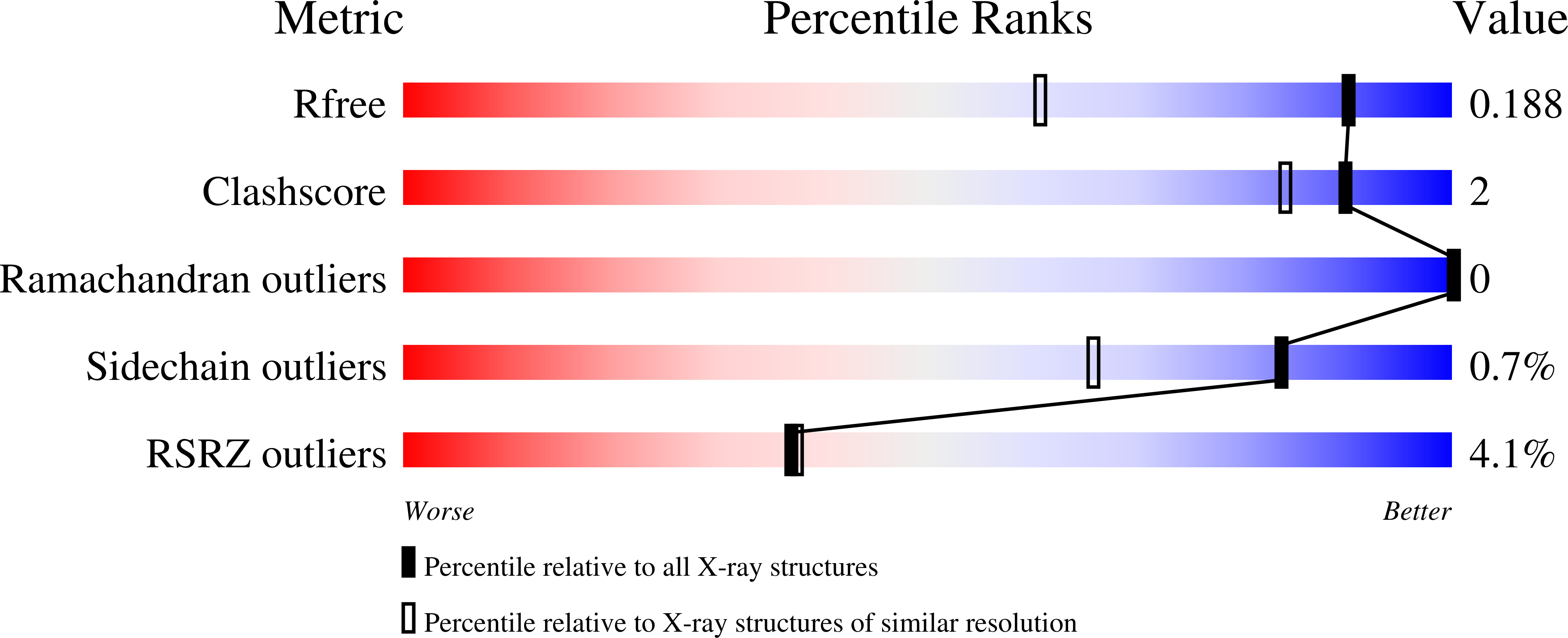Structures of TorsinA and its disease-mutant complexed with an activator reveal the molecular basis for primary dystonia.
Demircioglu, F.E., Sosa, B.A., Ingram, J., Ploegh, H.L., Schwartz, T.U.(2016) Elife 5
- PubMed: 27490483
- DOI: https://doi.org/10.7554/eLife.17983
- Primary Citation of Related Structures:
5J1S, 5J1T - PubMed Abstract:
The most common cause of early onset primary dystonia, a neuromuscular disease, is a glutamate deletion (ΔE) at position 302/303 of TorsinA, a AAA+ ATPase that resides in the endoplasmic reticulum. While the function of TorsinA remains elusive, the ΔE mutation is known to diminish binding of two TorsinA ATPase activators: lamina-associated protein 1 (LAP1) and its paralog, luminal domain like LAP1 (LULL1). Using a nanobody as a crystallization chaperone, we obtained a 1.4 Å crystal structure of human TorsinA in complex with LULL1. This nanobody likewise stabilized the weakened TorsinAΔE-LULL1 interaction, which enabled us to solve its structure at 1.4 Å also. A comparison of these structures shows, in atomic detail, the subtle differences in activator interactions that separate the healthy from the diseased state. This information may provide a structural platform for drug development, as a small molecule that rescues TorsinAΔE could serve as a cure for primary dystonia.
Organizational Affiliation:
Department of Biology, Massachusetts Institute of Technology, Cambridge, United States.




















